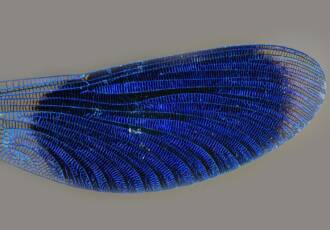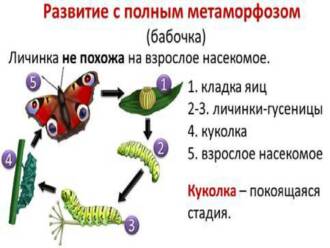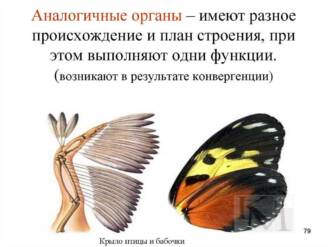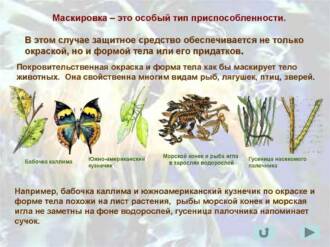
Butterflies are one of the most beautiful creatures of nature. Their bright wings adorn gardens and fields, attracting attention with their unique beauty. One of the most amazing features of butterfly wings is the ocelli, which are small, rounded patterns on the wings. But these eyes are not just decoration, they perform an important protective function.
The eyes on the wings of butterflies are rounded spots with a dark edge and a light center. They can be of different sizes and located on the wings in different ways. It is important to note that the eyes on the wings are not true eyes, because butterflies do not have a sight organ on the wings. However, they can mimic eyes very effectively.
The protective mechanisms of the eyes on the wings of butterflies are very interesting and varied. The most common theory is that the eyes are used to deter predators. Due to their size and coloration, they create the illusion of large eyes, which can frighten or disorient a predator. In addition, the eyes can serve to divert the predator's attention from the most vulnerable spot on the butterfly's body - the head or torso.
How butterflies protect their wings from damage
Butterflies, like other insects, have very fragile wings that can be easily damaged. However, they have developed several defense mechanisms that help them keep their wings in good condition.
microscopic scales
Butterfly wings are covered with microscopic scales that serve as a protective coating. These scales are made of keratin, the same material that makes up our nails and hair. When a butterfly senses danger, it may lose some of its scales to distract a predator or make its wings less attractive.
Color and patterns
Many butterflies have bright colors and intricate patterns on their wings. These patterns can serve a variety of purposes, including protection from predators. Some patterns may mimic eyes or venomous animals to deter predators. Other patterns may help butterflies blend in with their surroundings or signal their toxicity.
Protective postures and movements
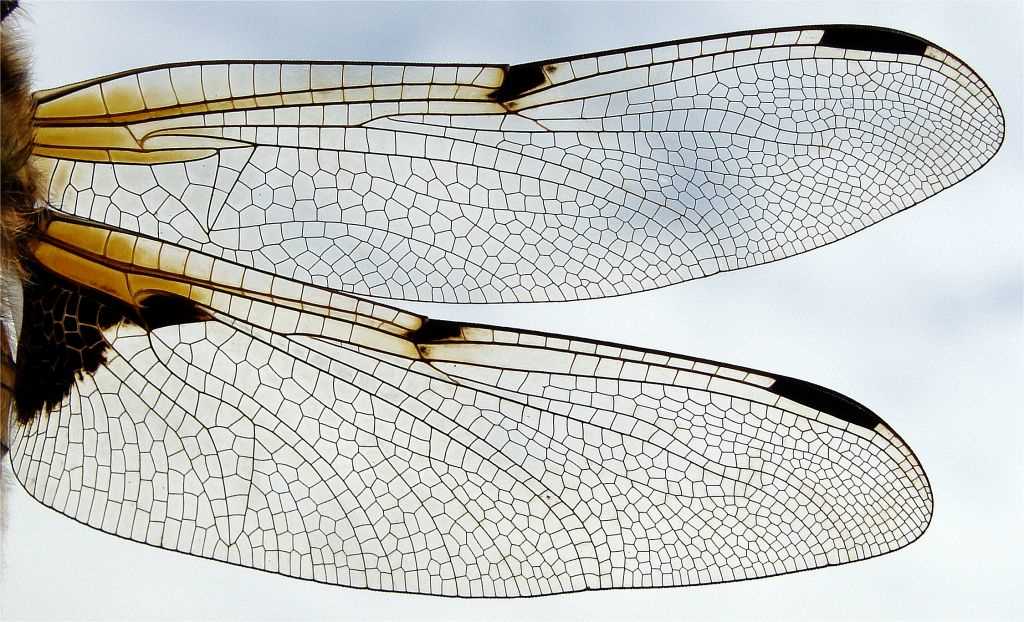
When the butterfly senses danger, it may assume a defensive posture or move in an unpredictable direction. This can confuse the predator and give the butterfly time to escape or hide. Some butterflies may also release scents or pheromones to deter predators or attract breeding partners.
All of these mechanisms help butterflies protect their wings from damage and survive in the harsh natural world.
The role of the eye on the wings of butterflies
The eyes on the wings of butterflies play an important role in their protection and survival. They are bright rounded spots that mimic the eyes of animals or birds. This disguise serves to scare off predators and create the illusion of a larger and more dangerous creature.
The eyes on the wings of butterflies fool predators into thinking they are facing a dangerous animal or bird. This forces the predator to retreat and not attack the butterfly. At the same time, the eyes can be of different colors and sizes, depending on the type of butterfly and its environment.
Some butterflies use eyes on their wings not only to scare away predators, but also to attract mates during breeding. Bright and attractive eyes on the wings can serve as a signal to other butterflies that this individual is ready to breed.
Thus, the eyes on the wings of butterflies play an important role in their survival and reproduction. They help deter predators and attract mates, giving the butterflies a better chance of continuing their species.
The mechanisms of the peephole on the wings of butterflies

The eyespots on the wings of butterflies are organs that perform several functions. They are defense mechanisms that help the butterflies survive in the environment in which they live.
One of the mechanisms used by the eyespots is their bright coloration. Butterflies have wings with bright and varied colors, which makes them noticeable to predators. Thus, the eyespots on the wings serve as a warning of danger.
Another mechanism by which the eyes work is their movement. Some species of butterflies can blink the eyes on their wings, creating the effect of movement. This can distract predators and make the butterfly less susceptible to attack.
The ocelli on butterfly wings can also mimic the eyes of an animal to confuse predators. They may be shaped and colored similar to the eyes of a bird or other predator. This creates the illusion that the butterfly is a dangerous creature and scares off potential predators.
In general, the mechanisms of the eyes on the wings of butterflies serve as a defense against predators and increase the chances of butterflies to survive. They can be used to warn of danger, distract predators, or create the illusion of danger. These mechanisms demonstrate the incredible adaptability and evolutionary adaptability of butterflies.
What types of eyes do butterflies have?
Eyes on butterfly wings are unique defense mechanisms that help them avoid predation. There are several types of eyes that can be found on butterfly wings.
1. Imitation eyes
One of the most common types of eyespots found on butterflies is the ocelli. These look like real eyes and can be found on the wings or other parts of the butterfly's body. Oocelli can be very realistic and can mimic the eyes of predators such as birds or lizards. This allows the butterfly to create the illusion of danger and distract the predator's attention from its vulnerable body parts.
2. Eyes-spots
Another type of eyespot that can be seen on butterflies are eyespots. These are dark or brightly colored round spots on the wings of butterflies. Eyespots can be positioned on the wings in such a way as to create the illusion of eyes, and their placement can resemble the eyes of a predator. This can frighten potential predators and cause them to retreat.
3. Eyes with transparent areas

Some butterflies have eyes with transparent patches on their wings. These areas look like windows or openings that can be seen through the wings. Eyes with transparent areas can create the illusion of eyes, which can scare predators and make them retreat. In addition, these transparent patches can help the butterfly hide and blend into its surroundings.
In general, the eyes on the wings of butterflies are effective defense mechanisms that help them survive in the harsh natural world. They can create the illusion of danger, distract predators, and help butterflies escape. These eyes are one of the many facets of beauty and amazing adaptations of butterflies.
Features of the structure of the eye on the wings of butterflies
The ocelli on butterfly wings are unique structures that perform an important protective function. They help the butterfly look more dangerous and divert the attention of predators from its vulnerable parts.
The structure of the eyes on the wings of butterflies includes several layers, each of which performs a specific role. The outer layer consists of a series of small scales that give the eyes a bright color and shine. This allows you to attract attention and create the illusion of movement.
Under the layer of scales is a transparent membrane that allows light to pass through and create a refraction effect. Due to this, the eyes on the wings of butterflies can change their appearance depending on the viewing angle. This makes them even more attractive and difficult for predators to perceive.
Another feature of the structure of the eyes on the wings of butterflies is their location. They are often located on the edges of the wings or along their entire surface. This gives the impression of many eyes, which distracts predators and creates the illusion of being larger and more dangerous.
Overall, the ocelli structure on butterfly wings is a complex and effective defensive adaptation. It allows the butterfly to survive in an environment where it is constantly threatened by predators.
The process of formation and development of the eye on the wings of butterflies
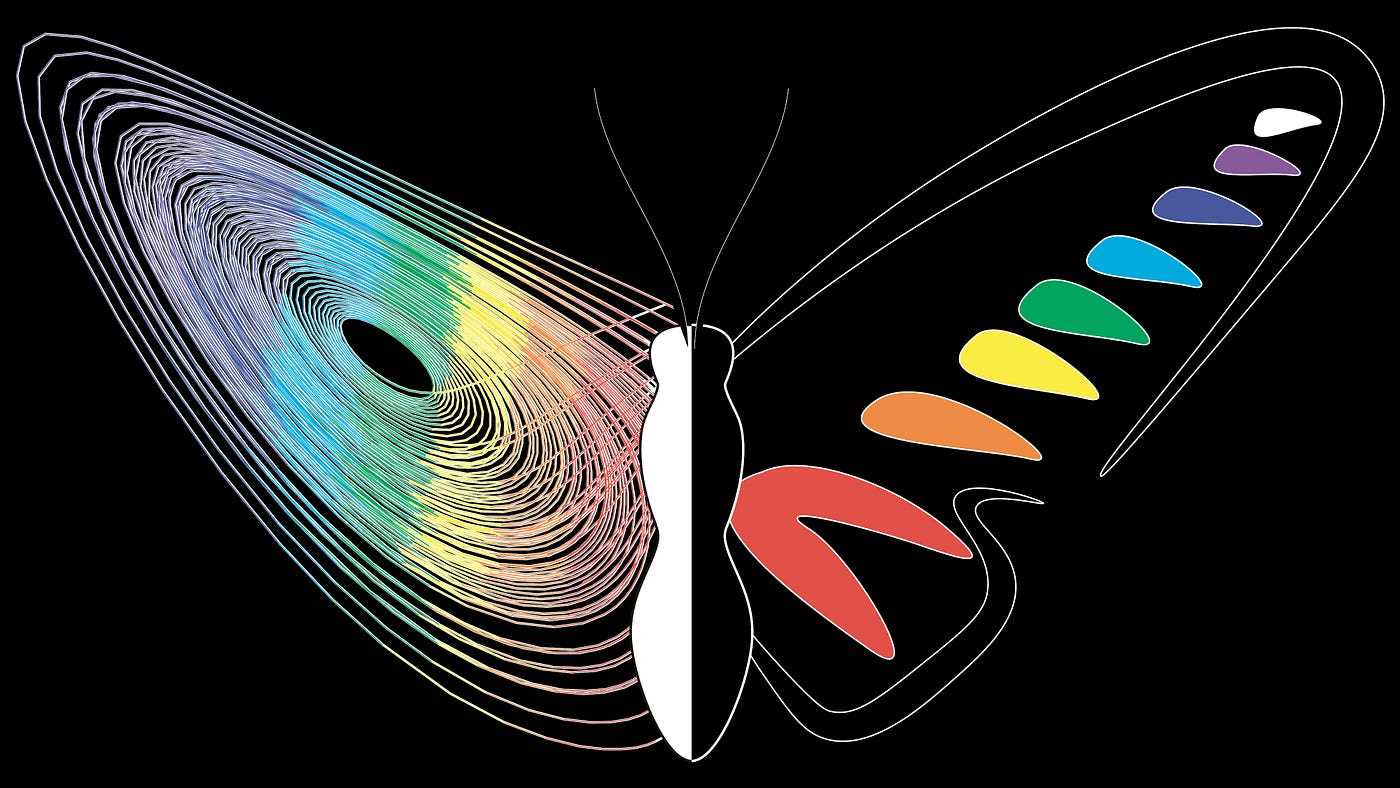
The eyes on the wings of butterflies are unique structures that play an important role in their protection and defense. The process of formation and development of eyes begins at the larval stage, when they are in eggs. At this stage, the basis for future eyes is already being formed.
When the larva hatches from the egg and begins to actively feed, its skin gradually stretches, and microscopic bumps appear on it - future eyes. During the molting process, when the larva periodically sheds old skin, the eyes become more and more pronounced and bright.
After the final molt, the larva turns into a pupa, at which point the eyes take on their final shape. Inside the pupa there are already fully developed eyes, which are ready for use after the butterfly emerges from the pupa. But they are still covered with a protective layer that keeps them from damage.
When the butterfly flies out of the chrysalis, its eyes fully open and acquire a bright color. They become ready for use in self-defense and repelling predators. Eyes attract the attention of predators and distract them from more vulnerable parts of the butterfly's body, such as the head or body.
Thus, the process of formation and development of ocelli on butterfly wings is complex and unique. It begins at the stage of the larva and continues until the moment the butterfly emerges from the chrysalis. The ocelli play an important role in protecting butterflies and help them survive in the wild.
The evolution of the defense mechanisms of the peephole on the wings of butterflies

The protective mechanisms of the eyes on the wings of butterflies are a unique adaptation that helps these insects survive in the harsh environment of nature. The evolutionary process has led to various strategies that provide protection from predators and deceive enemies.
One of the most common strategies is mimicry. Some species of butterflies have eyes on their wings, which resemble the eyes of predatory animals in shape and color. This allows the butterflies to fool their enemies by giving the illusion of large size and danger. Such eyes can be covered with a mask that mimics the nostrils of a predator or other details that make them even more realistic.
Another defense mechanism is distraction. Some butterflies may have bright and eye-catching patterns on their wings that distract predators from their true eyes. This allows the moths to evade danger and escape while the enemy is focused on the false eyes.
The third mechanism is reflexive behavior. Some types of butterflies may have special valves or flaps that allow them to close their eyes when threatened. This protects the eyes from damage and makes them invisible to predators. When the danger has passed, the butterfly opens its eyes again and can continue its activity.
Finally, some species of butterflies use a combination of different mechanisms. They may have mimic ocelli which, combined with distracting patterns and reflective behavior, provide maximum protection from predators. This evolutionary strategy allows butterflies to be successful in the fight for survival and pass on their genetic characteristics to the next generation.
The influence of the environment on the protective mechanisms of the eye
The environment plays an important role in the evolution and development of the protective mechanisms of the eyes on the wings of butterflies. External conditions such as climate, resources provided and the presence of predators have a significant impact on the operation and efficiency of these mechanisms.
One of the key factors influencing the protective mechanisms of the eye is the presence of predators in the environment. When threatened, the butterfly can open and close its ocelli on its wings, giving the illusion of being larger and more intimidating. However, depending on the presence and behavior of predators, these mechanisms may be more or less effective.
Climatic conditions also have a significant impact on the protective mechanisms of the peephole. In hot, dry regions, butterflies may use ocelli on their wings to regulate their body temperature. When the peephole is opened, the surface of the wings increases, and the butterfly can remove more heat. In cold regions, on the contrary, they may close their eyes to reduce heat loss.
The resources provided also affect the protective mechanisms of the peephole. If butterflies have enough food and shelter in their environment, they can use their eyes to attract mates and scare off competitors. However, if resources are limited, butterflies can use their eyes in a more economical mode to reduce energy costs.
Thus, the environment plays an important role in the formation and effectiveness of the protective mechanisms of the eyes on the wings of butterflies. It determines which mechanisms will be most useful and effective in specific conditions, and contributes to the adaptation and survival of these beautiful insects.
Eye specialization in different species of butterflies

The ocelli on butterfly wings are an important defense mechanism that provides protection from predators. In different types of butterflies, these eyes can have different specializations.
Some types of butterflies the ocelli on the wings have a bright and contrasting color, which serves as a warning sign for predators, warning them of the poisonousness or unpleasant taste of the butterfly. This phenomenon is called aposematics and allows the butterfly to avoid being attacked by predators.
In other types of butterflies eyes on the wings imitate the eyes of predatory animals, such as birds or lizards. This causes the predators to become distracted and confused, giving the butterfly time to escape.
Some species of butterflies have specialized eyes that reflect light and create a shimmering effect. This can serve as a signal to breeding partners or to scare away predators by giving the illusion of movement and confusing them.
There are also species of butterflies in which the eyes on the wings are used as a disguise. They can mimic the environment, such as a leaf or tree bark, to hide from enemies and become invisible.
The importance of the eyes on the wings of butterflies for their survival
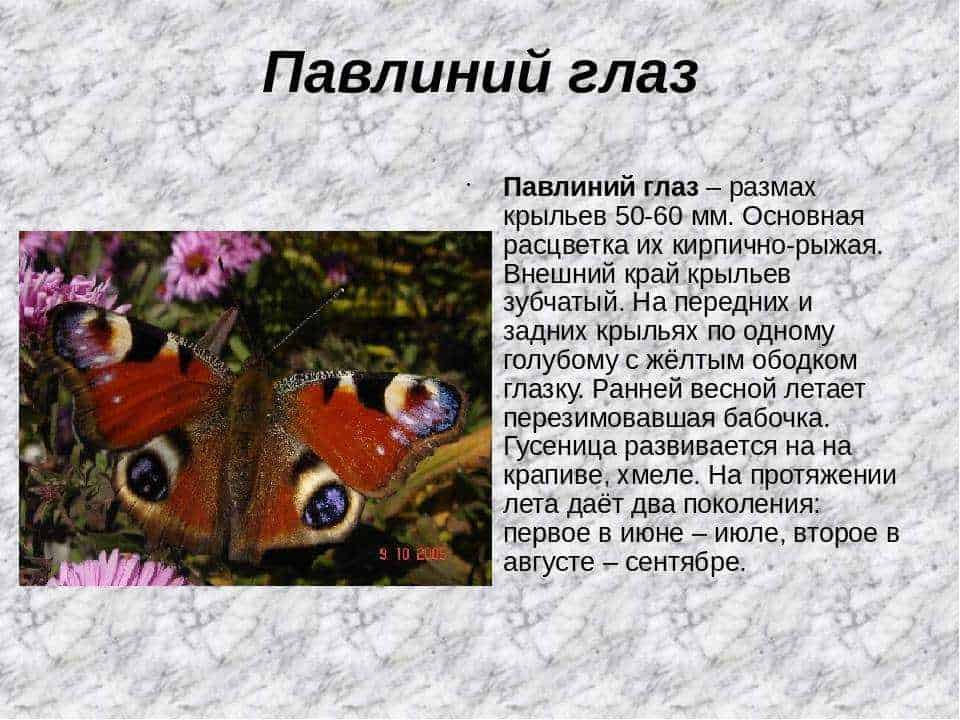
The eyes on the wings of butterflies are essential to their survival. These bright and numerous round spots located on the wings serve several important functions.
1. Protection from predators
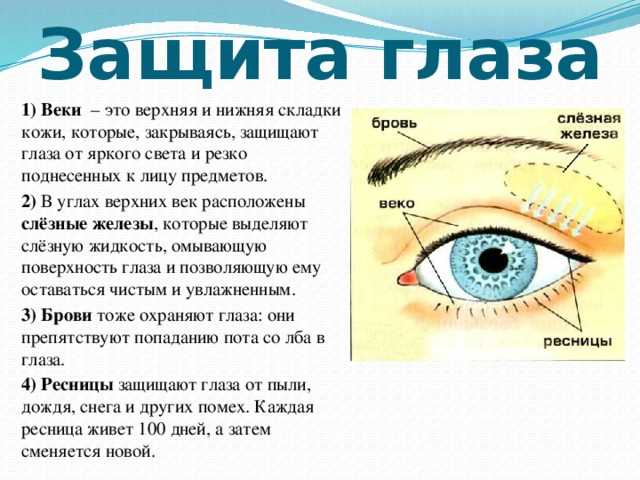
One of the main functions of the eyes on butterfly wings is protection from predators. The ocelli create the illusion of large eyes that can frighten or intimidate a predator. This defensive strategy increases the moth's chances of survival, as many predators may retreat in fear of attacking a seemingly larger foe.
2. Distraction

Eyes on butterfly wings are also able to divert the attention of predators from more vulnerable parts of the body. If a predator attacks the butterfly and focuses on the eyes, this may give the butterfly an opportunity to escape or use other defense mechanisms such as the release of toxic substances.
3. Disguise
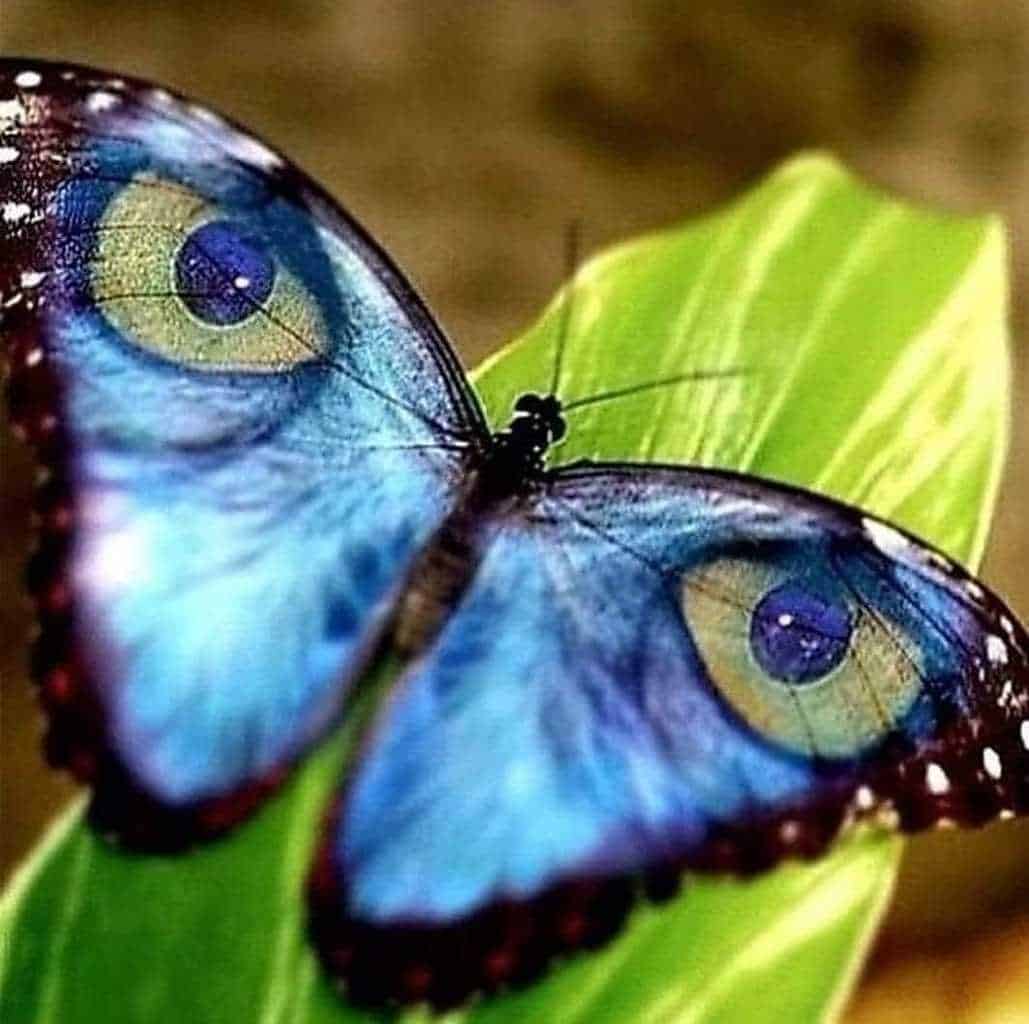
The eyes on butterfly wings can also serve as camouflage, helping them blend in with their surroundings. They can mimic the eyes of other animals or objects such as birds or lizards. This allows the butterfly to be less visible and protects it from possible predators.
In general, the eyes on the wings of butterflies play an important role in their survival, providing protection from predators, distracting their attention and providing camouflage. These defense mechanisms allow butterflies to survive in harsh environments and continue their life cycle.


